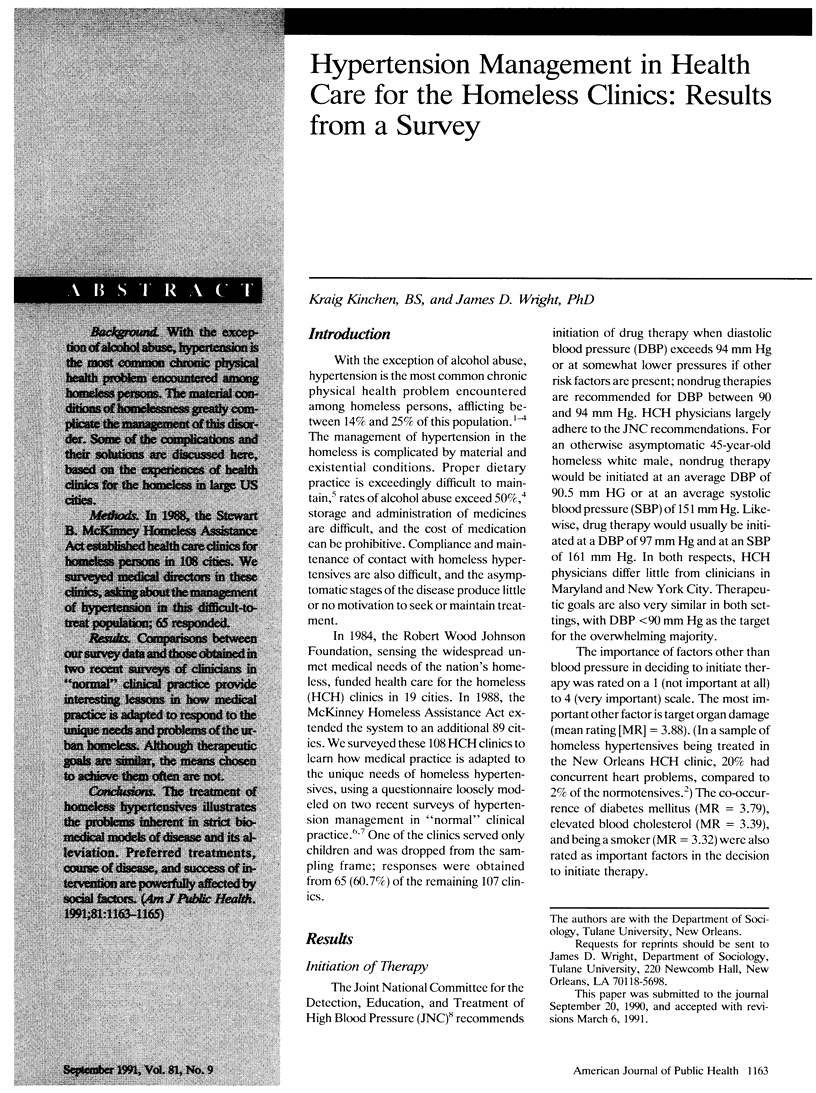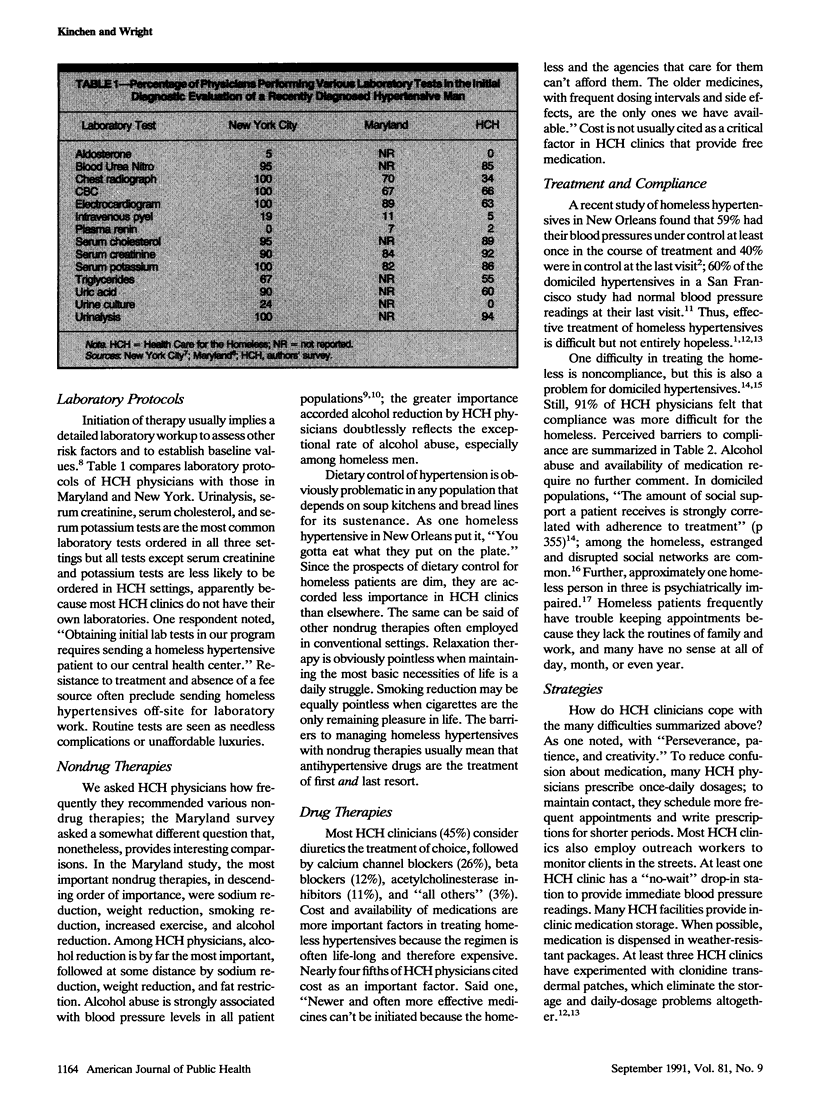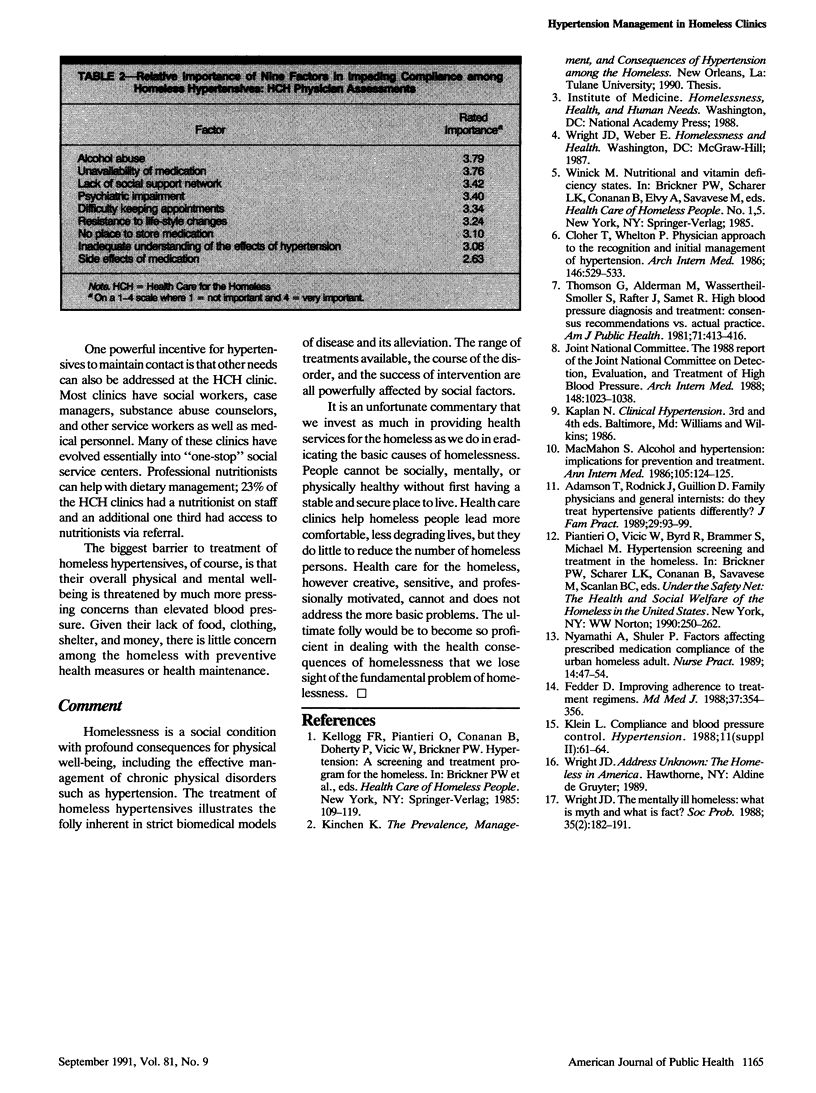Abstract
BACKGROUND. With the exception of alcohol abuse, hypertension is the most common chronic physical health problem encountered among homeless persons. The material conditions of homelessness greatly complicate the management of this disorder. Some of the complications and their solutions are discussed here, based on the experiences of health clinics for the homeless in large US cities. METHODS. In 1988, the Stewart B. McKinney Homeless Assistance Act established health care clinics for homeless persons in 108 cities. We surveyed medical directors in these clinics, asking about the management of hypertension in this difficult-to-treat population; 65 responded. RESULTS. Comparisons between our survey data and those obtained in two recent surveys of clinicians in "normal" clinical practice provide interesting lessons in how medical practice is adapted to respond to the unique needs and problems of the urban homeless. Although therapeutic goals are similar, the means chosen to achieve them often are not. CONCLUSIONS. The treatment of homeless hypertensives illustrates the problems inherent in strict biomedical models of disease and its alleviation. Preferred treatments, course of disease, and success of intervention are powerfully affected by social factors.
Full text
PDF


Selected References
These references are in PubMed. This may not be the complete list of references from this article.
- Adamson T. E., Rodnick J. E., Guillion D. S. Family physicians and general internists: do they treat hypertensive patients differently? J Fam Pract. 1989 Jul;29(1):93–99. [PubMed] [Google Scholar]
- Cloher T. P., Whelton P. K. Physician approach to the recognition and initial management of hypertension. Results of a statewide survey of Maryland physicians. Arch Intern Med. 1986 Mar;146(3):529–533. [PubMed] [Google Scholar]
- Fedder D. O. Improving adherence to treatment regimens. Md Med J. 1988 May;37(5):354–356. [PubMed] [Google Scholar]
- MacMahon S. W., Norton R. N. Alcohol and hypertension: implications for prevention and treatment. Ann Intern Med. 1986 Jul;105(1):124–126. doi: 10.7326/0003-4819-105-1-124. [DOI] [PubMed] [Google Scholar]
- Nyamathi A., Shuler P. Factors affecting prescribed medication compliance of the urban homeless adult. Nurse Pract. 1989 Aug;14(8):47-8, 51-2, 54. [PubMed] [Google Scholar]
- Thomson G. E., Alderman M. H., Wassertheil-Smoller S., Rafter J. G., Samet R. High blood pressure diagnosis and treatment: consensus recommendations vs actual practice. Am J Public Health. 1981 Apr;71(4):413–416. doi: 10.2105/ajph.71.4.413. [DOI] [PMC free article] [PubMed] [Google Scholar]


